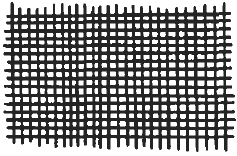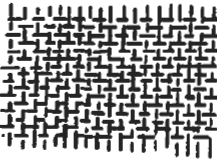Related Resources: materials
Composite Engineering Materials Review
A composite is a material consisting of two (or more) different materials bonded together, one forming a ‘matrix' in which are embedded fibers or particles that increase the strength and stiffness of the matrix material.
A natural composite is wood in which cellulose fibers are embedded in a lignin matrix. Concrete is a composite in which particles of stone add strength with a further increase in strength provided by steel reinforcing rods. Vehicle tires consist of rubber reinforced with woven cords.
Plastics are reinforced with glass, carbon and other fibers. The fibers may be unidirectional, woven or random chopped. Metals, carbon and ceramics are also used as matrix materials.
So-called ‘whiskers', which are single crystals of silicon carbide, silicon nitride, sapphire, etc., give extremely high strength.
Typical engineered composite materials include:
- Composite building materials such as cements, concrete
- Reinforced plastics such as fiber-reinforced polymer
- Metal Composites
- Ceramic Composites (composite ceramic and metal matrices)
Composite materials are generally used for buildings, bridges and structures such as boat hulls, swimming pool panels, race car bodies, shower stalls, bathtubs, storage tanks, imitation granite and cultured marble sinks and counter tops. The most advanced examples perform routinely on spacecraft in demanding environments.
Elastic modulus of a composite (continuous fibers in direction of load)
Let:
Ef = modulus of fibers
Em = modulus of matrix
Ec = modulus of composite
r = (cross-sectional area of fibers) / (total cross sectional area)
Ec = r Er + ( l - r ) Em
Acronyms for composites
FRP fiber-reinforced plastic
FRT fiber-reinforced thermoplastic
GRP Glass-reinforced plastic
GRC Glass-reinforced composite
CFC Carbon fiber composite
CFRP Carbon-fiber-reinforced plastic
CFRT Carbon-fiber-reinforced thermoplastic
Forms of fibers for composites
Fiber: length over 10 times the diameter; diameter less than 0.25 mm.
- Filament: a continuous fiber.
- Wire: a metallic fiber
- Whisker: a fiber consisting of a single crystal.
Arrangement of fibers in composites
|
Type
|
Arrangement
|
Comments
|
|
Unidirectional
|
 |
Load taken in direction of fibers. Weak at right angles to fibers
|
|
Bidirectional
|
 |
Takes equal load in both directions. Weaker since only half the fibers used in each direction
|
|
Multidirectional
|
 |
Load capacity much reduced but can take load in any direction in plane of fibers
|
|
WovenMat
|
 |
Similar to bidirectional however easy to handle
|
|
Random, Chopped
|
 |
Low in strength but multidirectional. Has handling advantages
|
Properties of some fibers, wires and whiskers used in composites
|
Material
|
Type
|
Density
(kgm-3) |
Young's Modulus
(GNm-2) |
Tensile Strength
(Nmm-2) |
Filament diameter
(µm) |
|
E Glass
|
Fiber
|
2,500
|
62
|
3,500
|
205
|
|---|---|---|---|---|---|
|
Carbon
|
Fiber
|
2,500
|
415
|
1,750
|
705
|
|
Silica
|
Fiber
|
2,500
|
72
|
6,000
|
5.0
|
|
18/8 Stainless Steel
|
Wire
|
7,900
|
205
|
2,100
|
150
|
|
Tungston
|
Wire
|
19,300
|
350
|
2,900
|
150
|
|
Tungston
|
Wire
|
19,300
|
350
|
3,800
|
25
|
|
Graphite
|
Whisker
|
2,200
|
675
|
21,000
|
-
|
|
Sapphire
|
Whisker
|
4,000
|
525
|
6,000
|
-
|
|
Silicon Carbide
|
Whisker
|
3,200
|
690
|
21,000
|
-
|
|
Silicon Nitride
|
Whisker
|
3,100
|
380
|
14,000
|
-
|